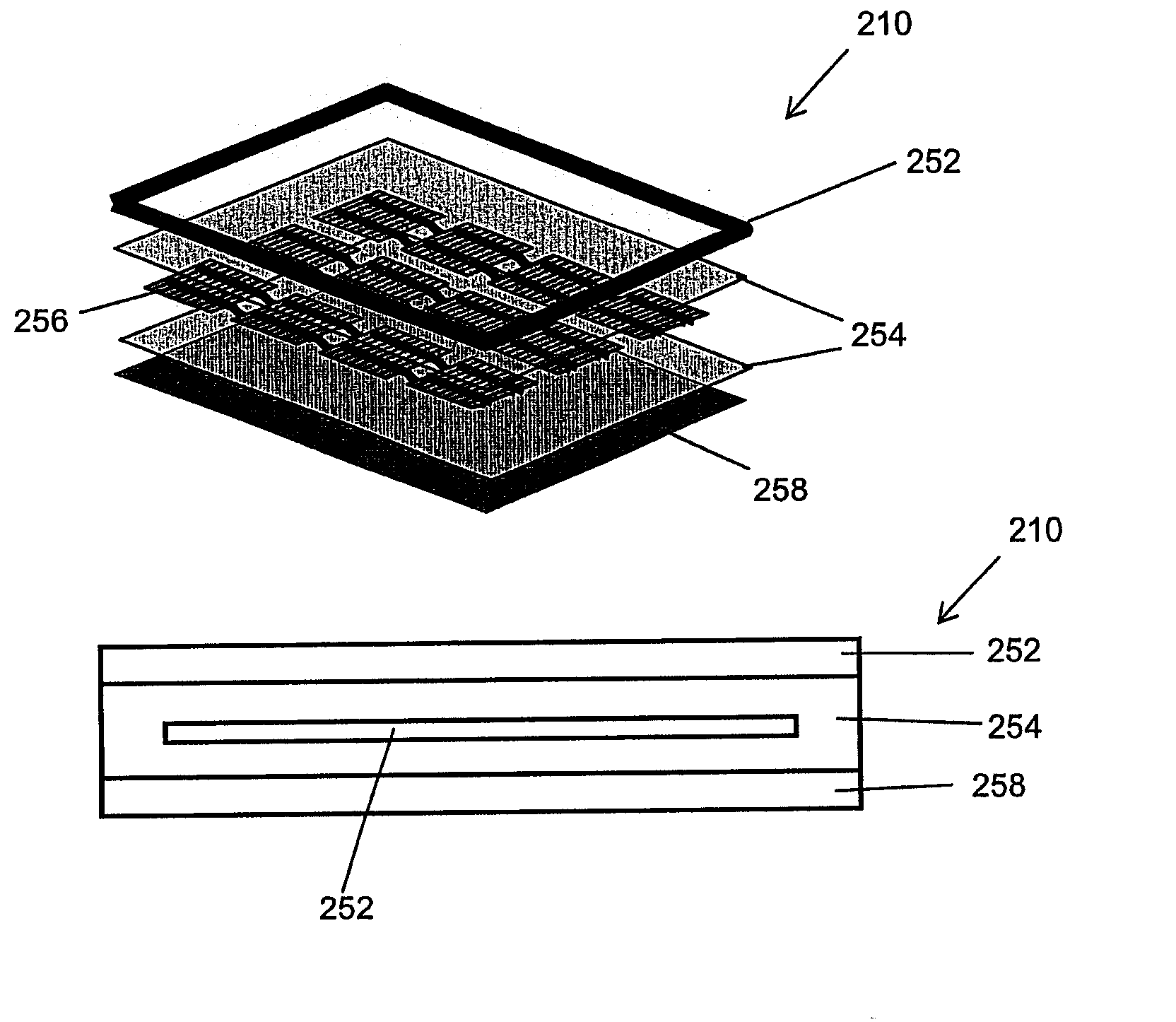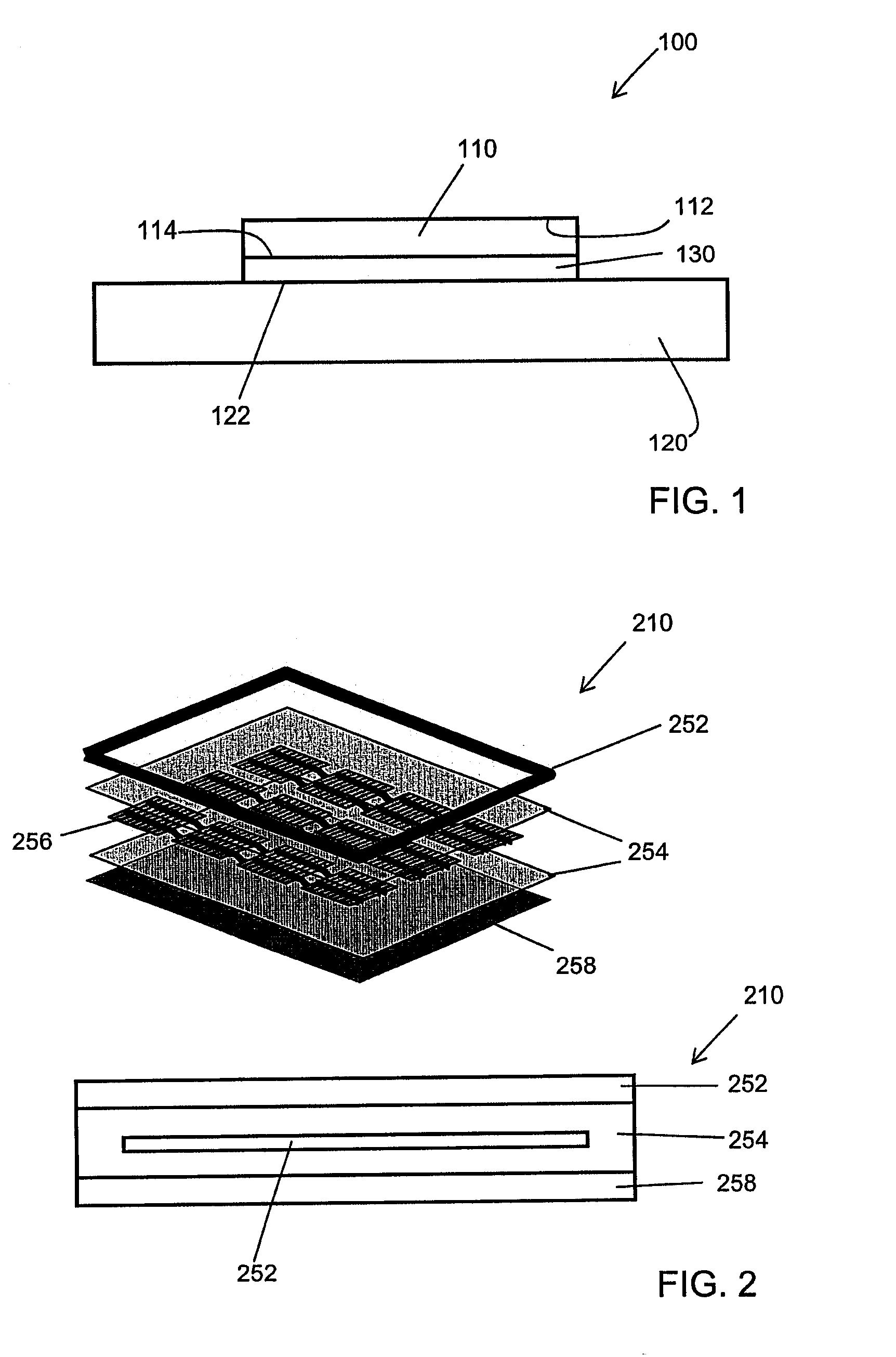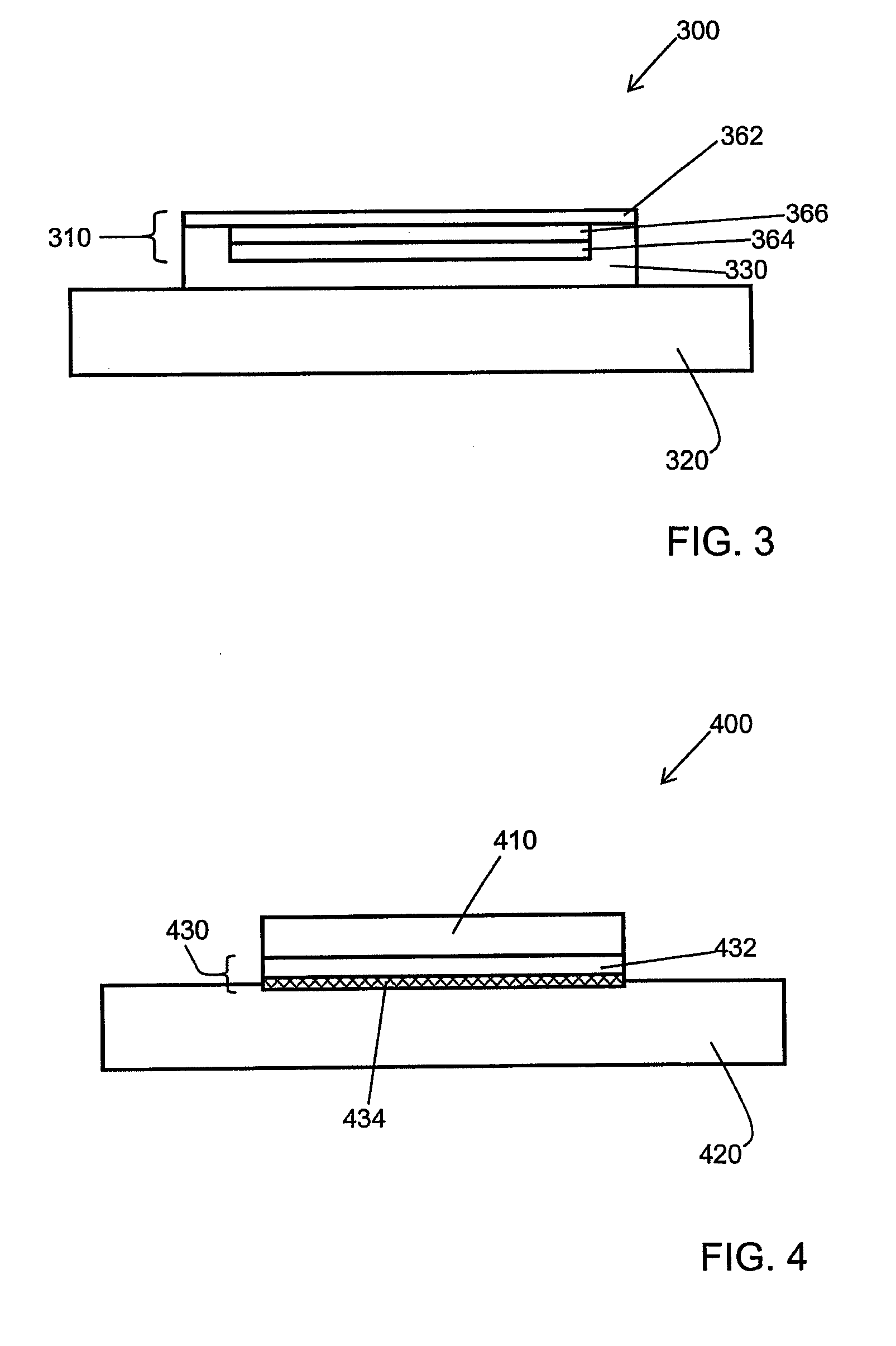Photovoltaic Roofing Elements Including Tie Layer Systems, And Roofs Using Them, And Methods For Making Them
- Summary
- Abstract
- Description
- Claims
- Application Information
AI Technical Summary
Benefits of technology
Problems solved by technology
Method used
Image
Examples
example 1
[0077]Tie layer substrate materials that can bond to both to an encapsulated photovoltaic element and a polyolefin roofing substrate were studied by extruding tie layers directly on to the substrate in a extrusion / lamination machine. The substrate used in this example was polypropylene (Basell PP KS02, available from Basell Corp., Elkton, Md.) containing 30 wt % of calcium carbonate as filler. The substrate was extruded as a sheet using a Johnson 2″ diameter extruder in combination with a 26″ die using processing temperatures of the barrel at 370° F., die temperature at 350° F., roll temperature at 113° F., and screw speed at 35 rpm to a layer thickness of about 20 mil.
[0078]In a first stage experiment, the adhesion between various tie layer systems and the propylene substrate was studied by the using the same extruder to extrude tie layer system materials at a layer thickness in the range of about 6-10 mil. The adhesion was then evaluated by a T-peel test (ASTM D-1876) using an Ins...
example 2
[0080]An encapsulated photovoltaic element affixed to a tie layer system was constructed by first laminating a top protective layer of ETFE film (TEFZEL from DuPont), an encapsulant layer of EVA (Elvax 3185 from DuPont Corp.), a photovoltaic cell (T-cell available from Uni-Solar Corp., Auburn Hill, Mich.), a back encapsulant layer of the same EVA, and a tie layer system consisting of a single layer of 30 wt % EVA (DuPont Bynel E418) and 70% polypropylene (Basell KS021P) using the same extruder as in Example 1. Once the multi-layer structure was fabricated, the assembly was then joined to a polypropylene substrate (#2898K13—¼″ thick sheet stock available from McMaster-Carr Corp, New Brunswick, N.J.) using an ultrasonic welding technique. The ultrasonic welding was performed using a Branson 2000X system with 2.5 KW max power output on a sample piece of 5″×5″. Good adhesion was found to be achieved around the perimeter of the sample piece by using 50% power setting and 20,000 Hertz fre...
PUM
| Property | Measurement | Unit |
|---|---|---|
| Thickness | aaaaa | aaaaa |
| Thickness | aaaaa | aaaaa |
| Height | aaaaa | aaaaa |
Abstract
Description
Claims
Application Information
 Login to View More
Login to View More - R&D
- Intellectual Property
- Life Sciences
- Materials
- Tech Scout
- Unparalleled Data Quality
- Higher Quality Content
- 60% Fewer Hallucinations
Browse by: Latest US Patents, China's latest patents, Technical Efficacy Thesaurus, Application Domain, Technology Topic, Popular Technical Reports.
© 2025 PatSnap. All rights reserved.Legal|Privacy policy|Modern Slavery Act Transparency Statement|Sitemap|About US| Contact US: help@patsnap.com



